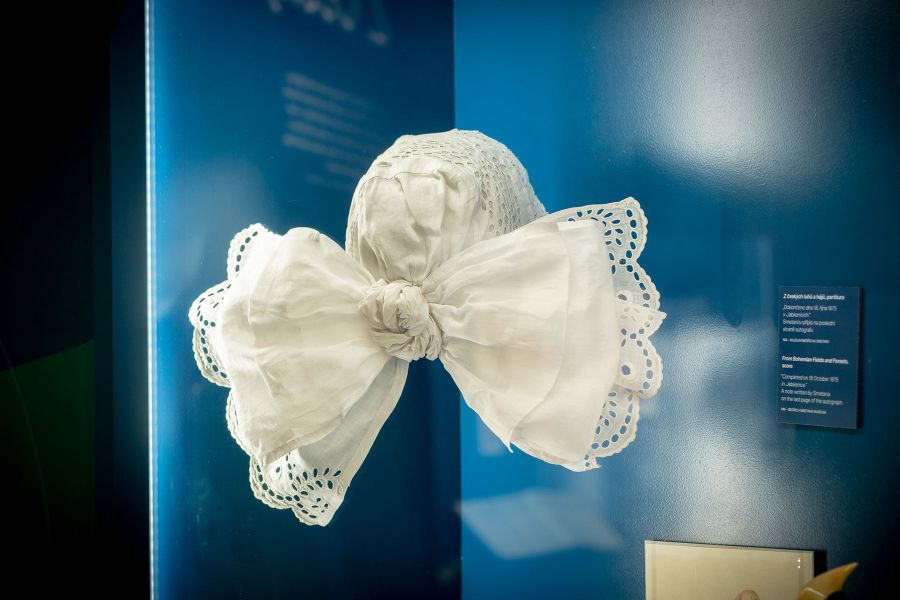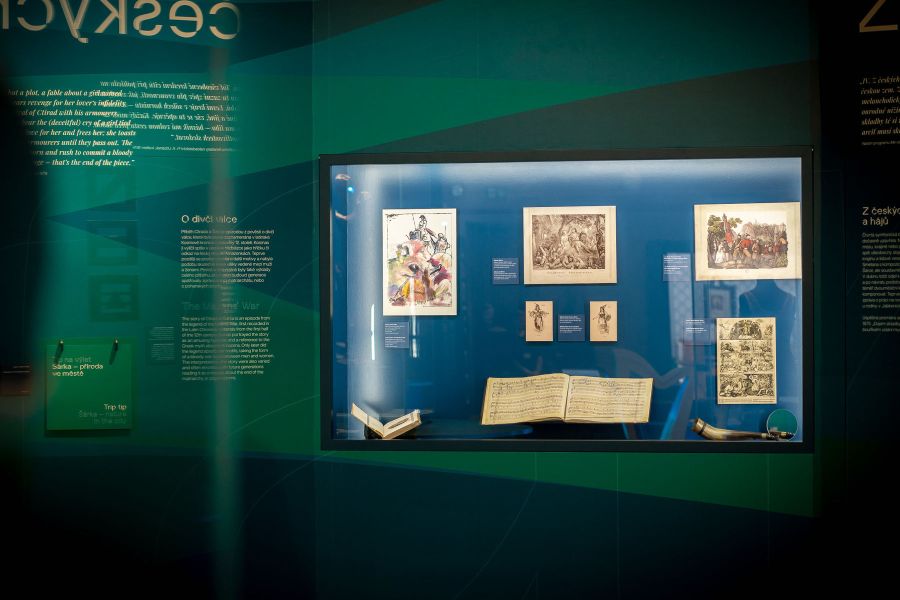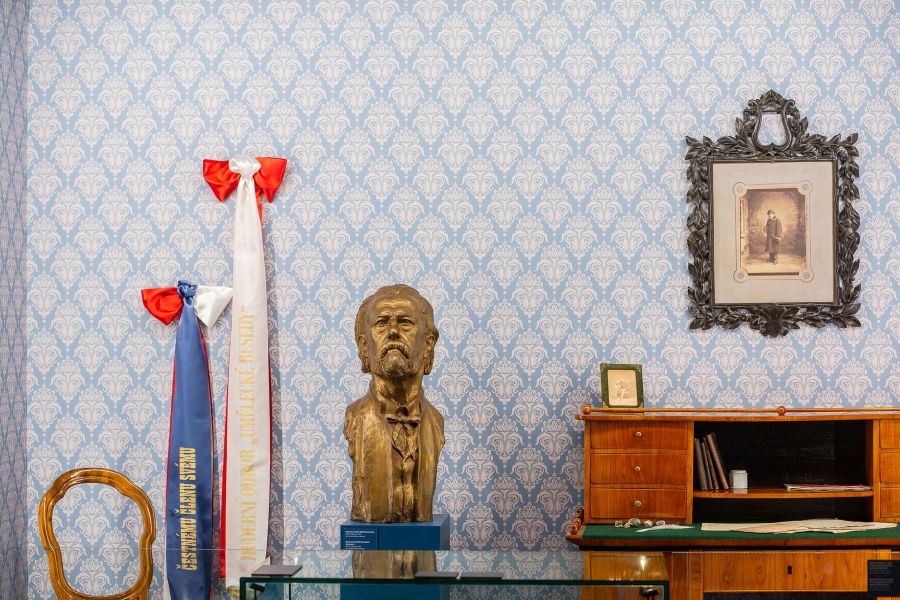The National Museum concludes this year’s exhibition season with the project Má vlast (My Fatherland). As part of the Year of Czech Music and on the occasion of the 200th birthday of composer Bedřich Smetana, this exhibition reflects on Smetana’s life and one of his most important creations.
Featuring original scores, correspondence, and particularly Smetana’s compositions, each symphonic poem is presented as the composer envisioned—within the historical context of its creation and in relation to the reactions it inspired during later key historical events. The exhibition was symbolically opened on 5 November 2024, marking the 142nd anniversary of the first full performance of My Fatherland (Má vlast).

Visitors to the exhibition can look forward to unique objects from the National Museum’s collection displayed across nine thematic sections. The exhibition begins by introducing the personality of Bedřich Smetana, with a focus on his life through personal items like his glasses, desk, writing tools, quill pen, peephole, and hearing aid.
The second section takes visitors back to the period and circumstances surrounding the creation of My Fatherland between 1874 and 1879, recalling the first performance by the ensemble on 5 November 1882 at the Žofín Palace in Prague.

Other parts of the exhibition are dedicated to the six individual poems—Vyšehrad, Vltava, Šárka, From Bohemia’s Woods and Fields, Tábor, and Blaník. For example, visitors will learn that Smetana composed the score for Vltava in just 19 days, adding the note “jsa úplně hluchý” (“completely deaf”).
The final, ninth section, “My Homeland Through Time,” reflects on performances of the work during pivotal historical moments for the Czech Republic.
“Bedřich Smetana, the creator of the national musical style and author of the iconic cycle of symphonic poems Má vlast, is a symbol of Czech musical identity. His music resonates with the Czech landscape, history, and mythology and is inseparably tied to the cultural heritage of the Czech Republic. The exhibition in the National Museum’s Historical Building has been designed like a composition with its own rhythmic structure, variations, and refrains. It not only presents the music of Bedřich Smetana but also familiarises visitors with the composer’s life and sources of inspiration,” said Michal Lukeš, Director-General of the National Museum.

In addition to Smetana’s personal items, the exhibition includes various musical manuscripts and scores, photographs, sculptures, paintings, letters, books, illustrations, and musical instruments—including a harp that visitors can play. Historical artefacts also include reproductions of Hussite weapons from the 19th century. Visitors can also experience “My Homeland in Stone,” where they can touch rocks from the Blaník mountain range or stones from the Vltava River. At the heart of the exhibition is, of course, the sound experience: it includes an audio map of Vltava and listening stations with the entire cycle of symphonic poems, allowing visitors to hear the central themes in brief excerpts.
Bedřich Smetana, originally born Friedrich in Litomyšl, came from a German brewing family. His music possesses a unique power to open people’s hearts and reach depths that words alone cannot convey.
National Museum Prague (Národní muzeum)
Václavské nám. 68, 110 00 Nové Město
Website | Facebook | Instagram
